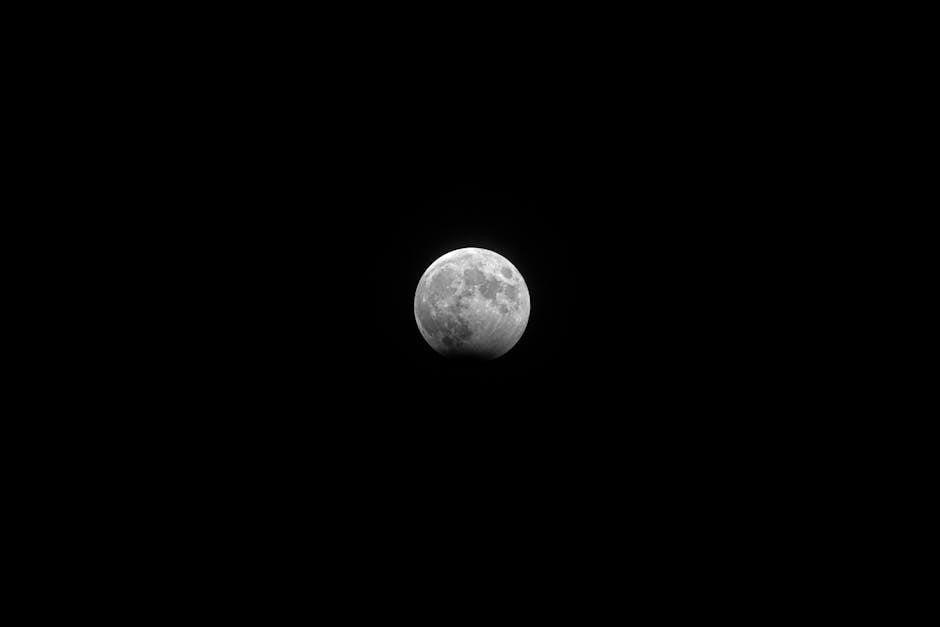
Educational tools like solar and lunar eclipse worksheets provide engaging ways to explore these celestial events. They offer word searches, puzzles, and diagrams to help students understand the phenomena.

Overview of Eclipses
Eclipses are fascinating astronomical events that occur when one celestial body moves into the shadow of another, temporarily blocking light. A solar eclipse happens when the Moon passes between the Earth and the Sun, casting its shadow on our planet. This can result in partial, total, or annular eclipses, depending on the alignment. A lunar eclipse, on the other hand, occurs when the Earth blocks sunlight from reaching the Moon, causing the Moon to darken or take on a reddish hue. Eclipses are rare and depend on specific alignments of the Earth, Sun, and Moon. They are visible from limited areas on Earth, making them special events for observation and study. Worksheets on eclipses help students visualize these phenomena, understand their causes, and engage with related concepts through diagrams, questions, and activities.
Importance of Worksheets in Learning
Worksheets are essential educational tools for understanding complex concepts like solar and lunar eclipses. They provide structured activities that simplify learning, making abstract ideas more accessible. Interactive elements such as word searches, puzzles, and diagrams engage students, fostering active participation. Worksheets also model celestial movements, helping learners visualize how the Earth, Sun, and Moon align during eclipses. These resources cater to diverse learning styles, offering both visual and hands-on approaches. Additionally, worksheets serve as assessment tools, allowing teachers to gauge students’ understanding. They are versatile, suitable for classroom use, homework, or supplementary learning. By incorporating engaging activities, worksheets make learning about eclipses fun and effective, while reinforcing key scientific concepts and skills. They are invaluable for creating a comprehensive and interactive learning experience.

Understanding Solar Eclipses
What Causes a Solar Eclipse?

A solar eclipse occurs when the Moon passes between the Earth and the Sun, blocking the Sun’s light and casting its shadow on the Earth.
A solar eclipse occurs when the Moon moves directly between the Earth and the Sun, blocking the Sun’s light. This alignment is known as a syzygy. The Moon’s shadow falls on a specific region of the Earth, creating an eclipse. There are three types of solar eclipses: total, annular, and partial, depending on how much of the Sun is obscured. A total solar eclipse happens when the Moon completely covers the Sun, revealing the Sun’s corona. Annular eclipses occur when the Moon appears smaller, leaving a ring of light visible. Partial eclipses happen when only part of the Sun is blocked. Solar eclipses are rare because the Moon’s orbit must align precisely with the Sun and Earth. Worksheets and diagrams help students visualize and understand this phenomenon, making it easier to grasp the celestial mechanics involved. Safety is crucial, as direct viewing without proper eyewear can harm the eyes. Educational resources, such as PDF worksheets, often include activities like drawing the Moon’s path and labeling the Earth, Sun, and Moon positions during an eclipse. These tools enhance learning and engagement in science classrooms.
Types of Solar Eclipses
There are three main types of solar eclipses: total, annular, and partial. A total solar eclipse occurs when the Moon completely covers the Sun, revealing the Sun’s corona. This is the rarest and most spectacular type. An annular solar eclipse happens when the Moon appears smaller than the Sun, leaving a ring of light visible. This occurs when the Moon is at a greater distance from the Earth. A partial solar eclipse occurs when only part of the Sun is obscured by the Moon. These types are determined by the Moon’s distance from the Earth and its apparent size relative to the Sun. Worksheets often include diagrams to illustrate these differences, helping students understand the varying appearances of solar eclipses. Educational resources also highlight the rarity and unique conditions required for each type, making them engaging for learners.
Safety Tips for Viewing Solar Eclipses
Viewing a solar eclipse safely is crucial to protect your vision. Directly looking at the Sun during an eclipse can cause solar retinopathy, leading to serious eye damage. Always use ISO-certified solar viewing glasses or handheld solar viewers with a certified solar filter. Never use homemade filters or regular sunglasses, as they do not provide adequate protection. Ensure the filter is undamaged and properly rated for solar viewing. When using a telescope or binoculars, fit them with a solar filter before looking through them. Supervise children closely to ensure they follow safety guidelines. Remember, the only safe time to view the Sun without protection is during the brief totality phase of a total solar eclipse. Always prioritize eye safety to enjoy this rare celestial event responsibly.

Understanding Lunar Eclipses
A lunar eclipse occurs when the Earth blocks sunlight from reaching the Moon, casting a shadow on its surface. It happens during a full moon and can be partial, total, or penumbral, depending on the Earth’s shadow alignment.
What Causes a Lunar Eclipse?
A lunar eclipse occurs when the Earth positions itself between the Sun and the Moon, blocking the sunlight that would normally reflect off the Moon’s surface. This alignment is known as syzygy. During a lunar eclipse, the Earth’s shadow falls on the Moon, creating an awe-inspiring spectacle. There are three types: total, partial, and penumbral, depending on whether the Moon is in the Earth’s umbra (total), penumbra (penumbral), or a combination of both (partial). The Moon may appear reddish during a total lunar eclipse due to Earth’s atmosphere scattering sunlight. Unlike solar eclipses, lunar eclipses are visible from anywhere on Earth where the Moon is above the horizon, making them more accessible for observation. However, they occur less frequently than solar eclipses due to the specific alignment required.

Types of Lunar Eclipses
There are three primary types of lunar eclipses: total, partial, and penumbral. A total lunar eclipse occurs when the Moon is completely within the Earth’s umbra, the darker inner shadow. During this phase, the Moon can take on a reddish hue due to sunlight scattering through Earth’s atmosphere. A partial lunar eclipse happens when only a portion of the Moon enters the umbra, creating a visible “bite” out of the Moon’s surface. Lastly, a penumbral lunar eclipse occurs when the Moon passes through the Earth’s penumbra, the lighter outer shadow, causing a subtle darkening of the Moon’s surface. These types depend on the Moon’s position relative to the Earth’s umbra and penumbra during the eclipse event.
Visibility and Frequency
Lunar eclipses are more frequently visible than solar eclipses because they can be seen from any location on Earth where the Moon is above the horizon. A total lunar eclipse is less common but can be observed from an entire hemisphere. Solar eclipses, however, are only visible along a narrow path called the path of totality, making them much rarer for any specific location. On average, a total solar eclipse is visible from any given location about once every 360 years. Lunar eclipses occur about twice a year, though not all are total. The frequency of eclipses is determined by the alignment of the Earth, Sun, and Moon, with roughly 2 to 5 solar eclipses and a similar number of lunar eclipses occurring annually.

Structure of the Worksheet
The worksheet includes diagrams, word searches, and puzzles to engage students. It features fill-in-the-blank questions, drawing activities, and matching terms with definitions to enhance understanding of eclipses.
Key Features of the Worksheet
The worksheet includes engaging activities such as word searches, puzzles, and diagrams to visualize celestial movements. It features fill-in-the-blank questions, drawing tasks, and matching exercises to enhance learning. Interactive elements like labeling diagrams and sequencing events make concepts memorable. The inclusion of discussion prompts encourages critical thinking and collaboration. Clear instructions and visually appealing layouts ensure accessibility for diverse learners. Additional resources, such as answer keys and extension activities, support comprehensive understanding. These features collectively create a dynamic and educational tool for exploring solar and lunar eclipses.
Engagement Activities
The worksheet incorporates a variety of engaging activities to captivate students’ interest and deepen their understanding. Word searches and crossword puzzles introduce key terms related to eclipses, while diagram-labeling tasks help visualize celestial alignments. Students are encouraged to draw and color illustrations of solar and lunar eclipses, fostering creativity and retention. Sequencing exercises allow learners to arrange events in the correct order, enhancing comprehension of the processes. Interactive questions prompt students to predict outcomes and discuss hypotheses, fostering critical thinking. Group activities, such as pairing students to compare solar and lunar eclipses, promote collaboration and peer learning. These engaging elements make the worksheet an effective and enjoyable educational resource.
Interactive Elements
The worksheet is designed with interactive elements to enhance student engagement and learning. Drag-and-drop activities allow students to arrange the Sun, Moon, and Earth in their correct positions during eclipses. Clickable diagrams provide visual representations of solar and lunar eclipses, enabling students to explore the processes interactively. Fill-in-the-blank exercises and matching games test knowledge while keeping students entertained. Interactive quizzes with immediate feedback help reinforce concepts and identify areas for further study. These elements encourage active participation, making complex astronomical phenomena more accessible and fun for learners. By integrating these features, the worksheet creates a dynamic and immersive educational experience that caters to diverse learning styles and preferences.

Educational Benefits
The worksheet enhances scientific knowledge, fostering critical thinking and visual learning. It adapts to various learning environments, making complex concepts accessible and engaging for students of all ages.
Conceptual Understanding
The worksheet aids in building a foundational grasp of solar and lunar eclipses, enabling students to visualize the alignment of the Earth, Sun, and Moon. Through diagrams and activities, learners explore how shadows are cast during these events. Interactive elements, such as labeling exercises and sequencing tasks, simplify complex concepts like the difference between a solar and lunar eclipse. The inclusion of word searches and puzzles reinforces vocabulary related to eclipses, making abstract ideas more tangible. By engaging with these materials, students develop a clearer understanding of celestial mechanics and the conditions necessary for eclipses to occur. This hands-on approach fosters a deeper appreciation for astronomy and the natural world, encouraging curiosity and critical thinking. The worksheet’s structured format ensures that key concepts are presented logically, helping students internalize the science behind these phenomena.
Practical Applications
The worksheet provides hands-on activities that connect theoretical knowledge to real-world applications. Students can model the Earth, Sun, and Moon’s movements during eclipses, enhancing their spatial reasoning. Drawing diagrams helps visualize how shadows create eclipses, making complex concepts relatable. Safety guidelines for viewing solar eclipses emphasize practical awareness, ensuring students understand the importance of eye protection. Activities like matching terms to definitions and solving puzzles reinforce problem-solving skills. The worksheet also encourages critical thinking about eclipse visibility and frequency, fostering an understanding of astronomical events. By aligning with educational standards, it prepares students for assessments while making learning interactive and enjoyable. These practical exercises bridge the gap between classroom lessons and everyday applications, equipping students with essential skills for further scientific exploration. The worksheet’s versatility ensures it can be adapted to various learning environments and curricula.
Skills Development
The solar and lunar eclipse worksheet enhances critical thinking and problem-solving skills through interactive activities. Students develop scientific reasoning by analyzing the positions of celestial bodies and understanding shadow mechanics. Word searches and puzzles improve vocabulary and attention to detail, while drawing tasks fostering creativity. Matching terms to definitions strengthens memory retention and organizational skills. Discussions and group work encourage collaboration and communication. The worksheet also enhances spatial awareness by modeling the Earth, Sun, and Moon’s movements. Practical questions about eclipse visibility and frequency promote analytical thinking. These exercises collectively build a strong foundation in astronomy, preparing students for advanced STEM topics. By engaging with real-world applications, students develop a deeper appreciation for celestial events and their scientific significance. The worksheet’s diverse activities ensure well-rounded skill development, making it a valuable educational resource.
Using the Worksheet Effectively
The solar and lunar eclipse worksheet can be used as homework, classroom activity, or supplementary material. It encourages hands-on learning and reinforces key concepts effectively for students of all levels.

Implementation in Classrooms
Solar and lunar eclipse worksheets can be seamlessly integrated into classroom lesson plans, serving as interactive tools for teaching celestial events. Teachers can use these resources for group activities, individual assignments, or homework to reinforce key concepts. The worksheets are versatile, offering a mix of fill-in-the-blank exercises, matching games, and drawing activities to cater to diverse learning styles. For instance, students can label diagrams of the Earth, Sun, and Moon to visualize how eclipses occur. Additionally, discussion questions encourage collaborative learning and critical thinking. By incorporating these worksheets into daily routines, educators can create engaging and informative lessons that align with curriculum goals. They also provide a practical way to assess students’ understanding of solar and lunar eclipses.
Homework and Assessment
Solar and lunar eclipse worksheets serve as excellent homework assignments, allowing students to reinforce their understanding of celestial events outside the classroom. These resources can also function as quick assessment tools to evaluate students’ grasp of key concepts. The worksheets often include fill-in-the-blank questions, matching activities, and diagram labeling exercises, which provide a comprehensive way to test knowledge. Teachers can use the completed worksheets to identify areas where students may need additional support. Additionally, the inclusion of critical thinking questions encourages students to apply what they’ve learned, making the worksheets a valuable component of both homework and formative assessments. This practical approach ensures that students engage with the material and retain information effectively, aligning with curriculum goals for science education.
Supplementary Materials
Supplementary materials, such as WebQuests and interactive simulations, complement the solar and lunar eclipse worksheet PDF, offering students a deeper understanding of celestial events. These resources include diagrams, videos, and hands-on activities that enhance learning. WebQuests guide students through online explorations, encouraging them to research and analyze eclipses independently. Interactive simulations allow students to visualize the movements of the Earth, Sun, and Moon, making abstract concepts more tangible. Additional materials, such as answer keys and extension activities, provide teachers with tools to support differentiated instruction. By integrating these supplementary resources, educators can create a comprehensive and engaging learning experience that aligns with curriculum standards and fosters scientific literacy.

Downloading the Worksheet
Download the solar and lunar eclipse worksheet PDF for engaging activities and educational value. Access it easily via the provided link for a comprehensive learning experience.
Accessing the PDF
Accessing the solar and lunar eclipse worksheet PDF is straightforward. Visit educational platforms like TeachersPayTeachers or LiveWorksheets to download the document. Ensure you have a compatible PDF viewer installed. The worksheet includes diagrams, definitions, and discussion questions tailored for grades 6-8. It serves as a versatile tool for classrooms, homework, or self-study. Educators can print it for physical activities or use it digitally, depending on their preference. The PDF is designed to enhance learning through interactive elements and clear visuals, making complex concepts understandable. By downloading this resource, you gain a comprehensive guide to understanding eclipses, suitable for various learning environments. Make sure to check the website for any additional resources or updates to maximize its educational value.
Additional Resources
Beyond the solar and lunar eclipse worksheet PDF, there are numerous supplementary materials available to deepen understanding. Webquests, activity sheets, and educational guides provide interactive learning experiences. These resources often include diagrams, quizzes, and discussion prompts tailored for various grade levels. For instance, some worksheets offer fill-in-the-blank exercises, while others feature matching games to link terms with definitions. Additionally, there are bilingual resources, such as Spanish-language activity sheets, to cater to diverse learners. Websites like TeachersPayTeachers and LiveWorksheets host a variety of these materials, ensuring educators and students have ample tools to explore eclipses. These resources complement the core worksheet, offering a well-rounded approach to learning about solar and lunar eclipses. They are ideal for reinforcing concepts in classrooms or for independent study. Exploring these materials can enhance engagement and retention of astronomical knowledge.